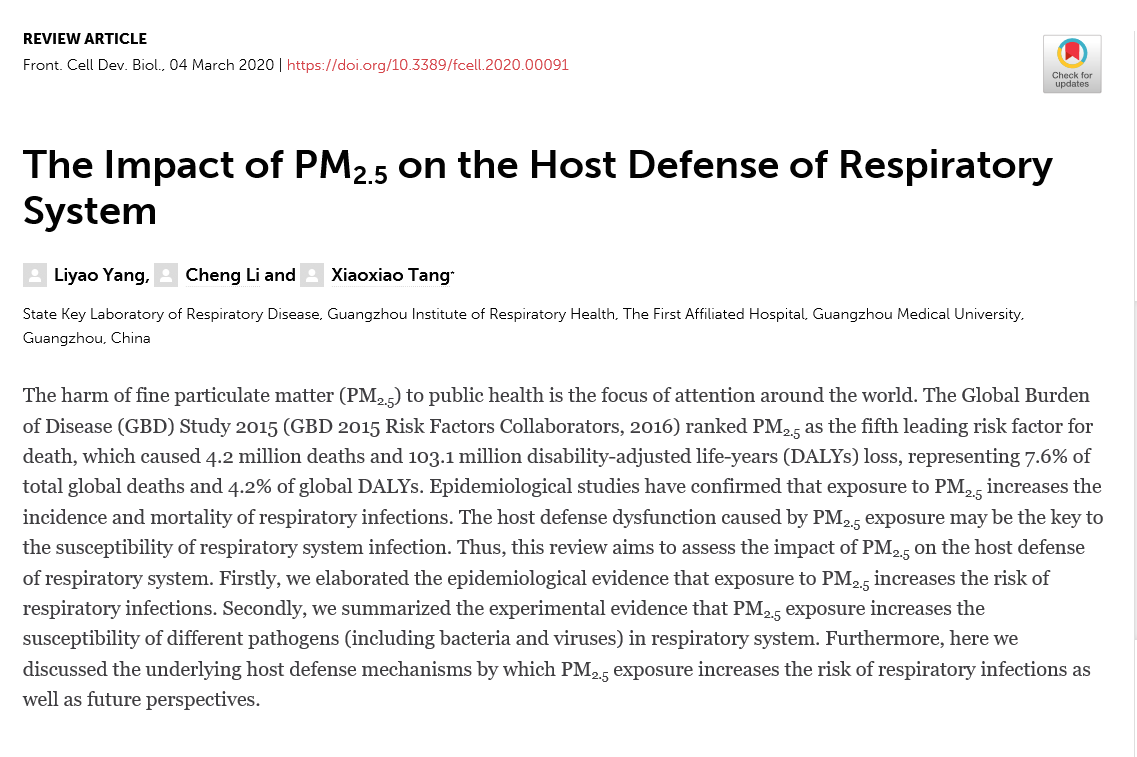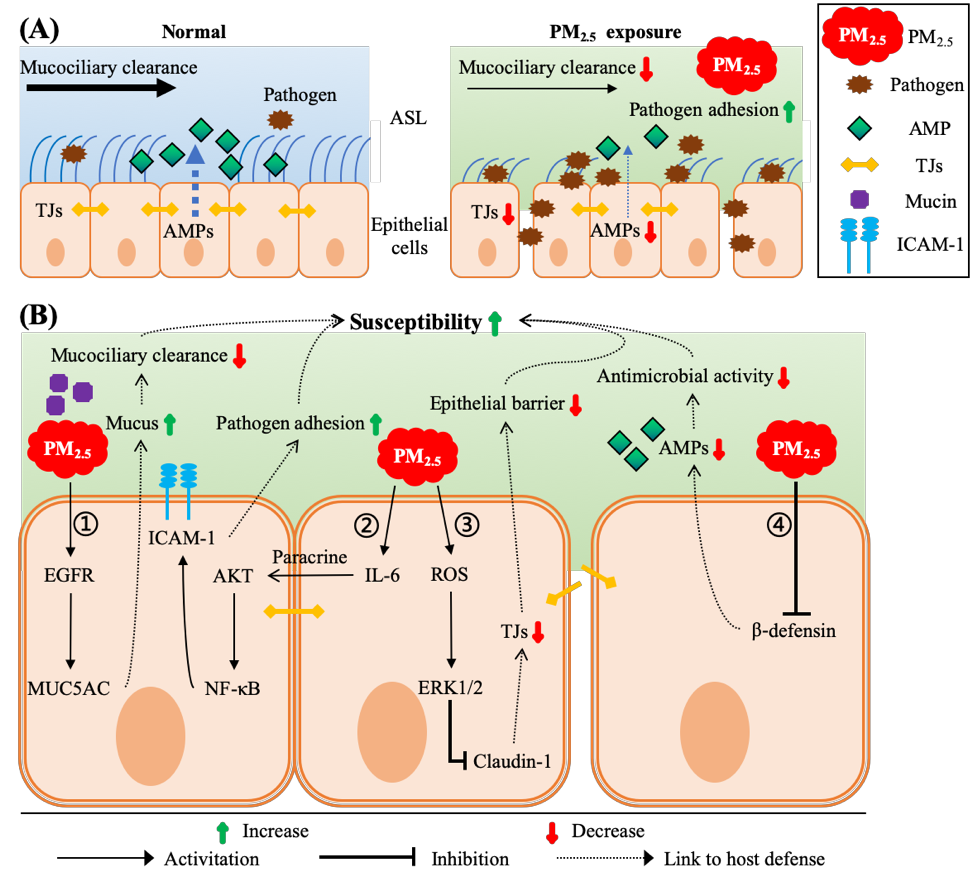The research team led by Professor Tang Xiaoxiao of the SKLRD publishes a review “Impacts of PM2.5 to host defence of respiratory system” on the journal Front.Cell Dev. Biol.
2020-03-103982Fine particulate matter (PM2.5) is one of the focuses of worldwide attention to the hazards of public health. In 2015, the global research report on burden of diseases listed PM2.5 as the fifth major risk factor of death. According to the epidemiological research, an exposure to PM2.5 will increase the incidence rate and death rate of respiratory tract infection.
On March 4, a review with the title of “The impact of PM2.5 on the host defense of respiratory system” was published on the journal Frontiers in Cell and Developmental Biology (IF=5.206) among the Frontiers in series journals of Swiss, with Professor Tang Xiaoxiao of SKLRD as the corresponding author, and master graduates Yang Liyao and Li Cheng as the first and second authors. The paper systematically explains the epidemiological and experimental evidences for the first time that PM2.5 will increase the infection of respiratory system and the potential host defence mechanism.


Main conclusions:
1. Sufficient epidemiological data and in vivo and in vitro experiments indicate that an exposure to PM2.5 will increase the susceptibility of respiratory tract infection;
2. The possible mechanisms for PM2.5 to impair the host defence ability of respiratory tract (Fig. 1): ① Impairment of host defence function of airway epithelium: for example, the adhesion between pathogens and epithelial cells increases, the epithelial barrier function declines, mucociliary clearance weakens and the anti-bacteria activity of liquid at the surface of airway declines. ②The micro-ecology of respiratory tract is changed: For example, the normal bacteria decrease and even vanish, which results in the increase of pathogenic bacteria. ③Insufficient immune cells and dysfunction: For example, natural killer cells are absent, and the phagocytic ability of alveolar macrophage declines.

3. The molecular mechanism for the dysfunction of host defense of respiratory tract epithelium caused by PM2.5 (Fig. 2): ①PM2.5 → EGFR↑ → MUC5AC↑ → Mucus↑ → mucociliary clearance↓;②PM2.5 → IL-6↑ → AKT↑ → NF-κB↑ → ICAM-1↑ → pathogen adhesion↑;③PM2.5 → ROS↑ → ERK-1/2↑ → Claudin-1↓ → TJs↓ → epithelial barrier↓;④PM2.5 → β-defensin↓ → AMPs↓ → anti-bacteria activity↓

Key prospects:
1. Epidemiology: A dispute still exists in the research on the relationship between PM2.5 exposure and age, gender and specific pathogens. An attempt can be made to extract and analyze the existing researches to further confirm the susceptible population and major pathogenic bacteria;
2. In vivo experiment: In previous researches, the animal model was mainly established through tracheal drip, whose biggest shortage is that it cannot imitate the natural exposure process of human body to PM2.5 . The author recommends serial oral and nasal exposure system to novel aerosol concentration or whole body exposure system to build the model.
3.Molecular mechanism: At present the researches on the increase of respiratory tract susceptibility by PM2.5 exposure are mainly concentrated on epidemiology, animal and cell experiment models. In the future, more deep explorations can be carried out on its molecular mechanism.
















